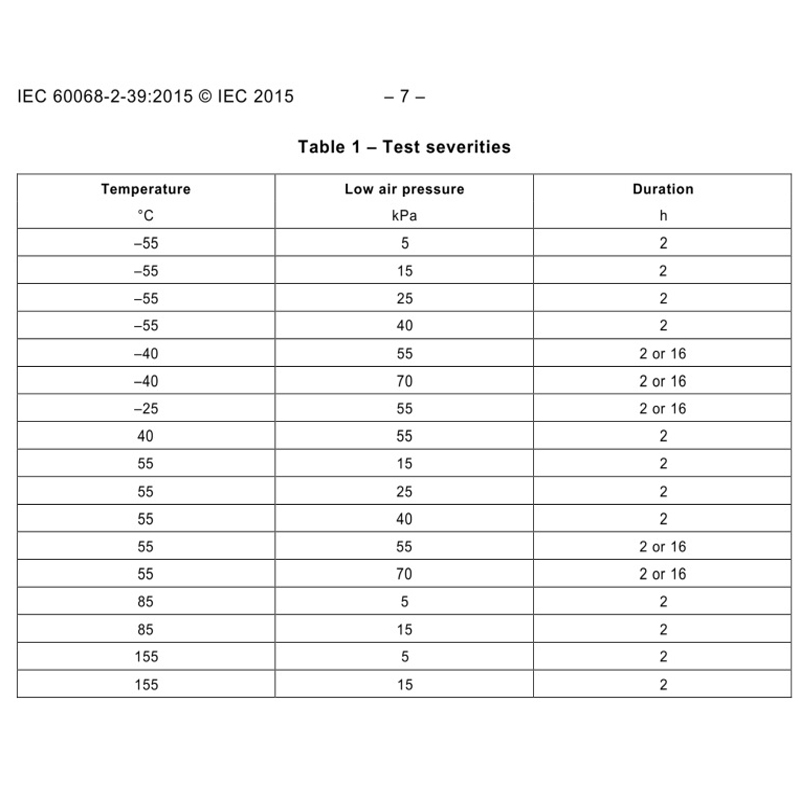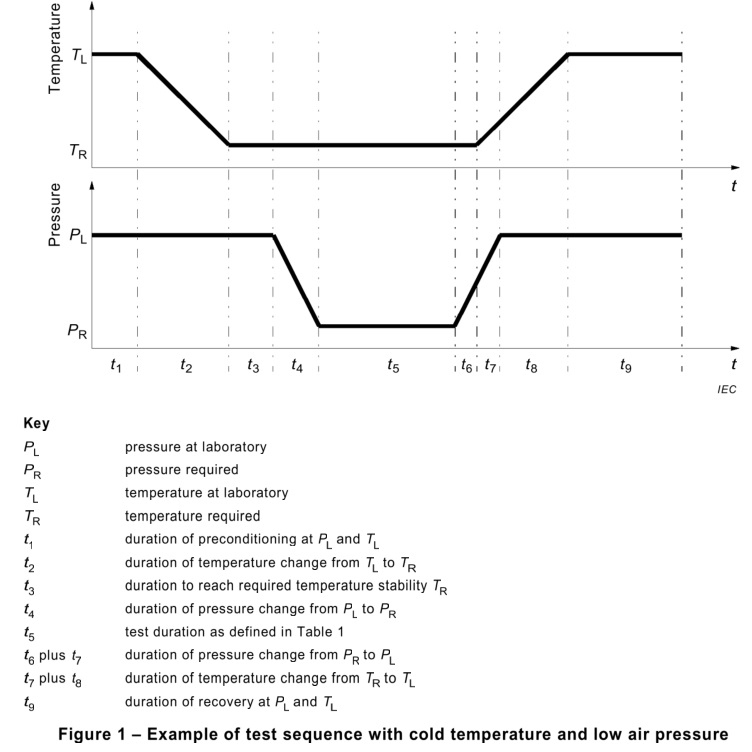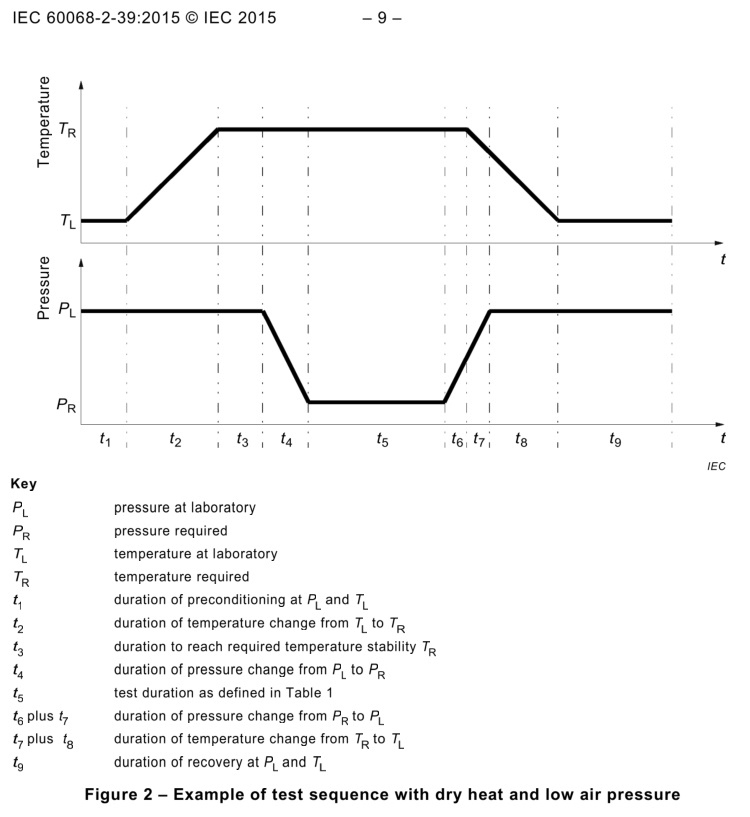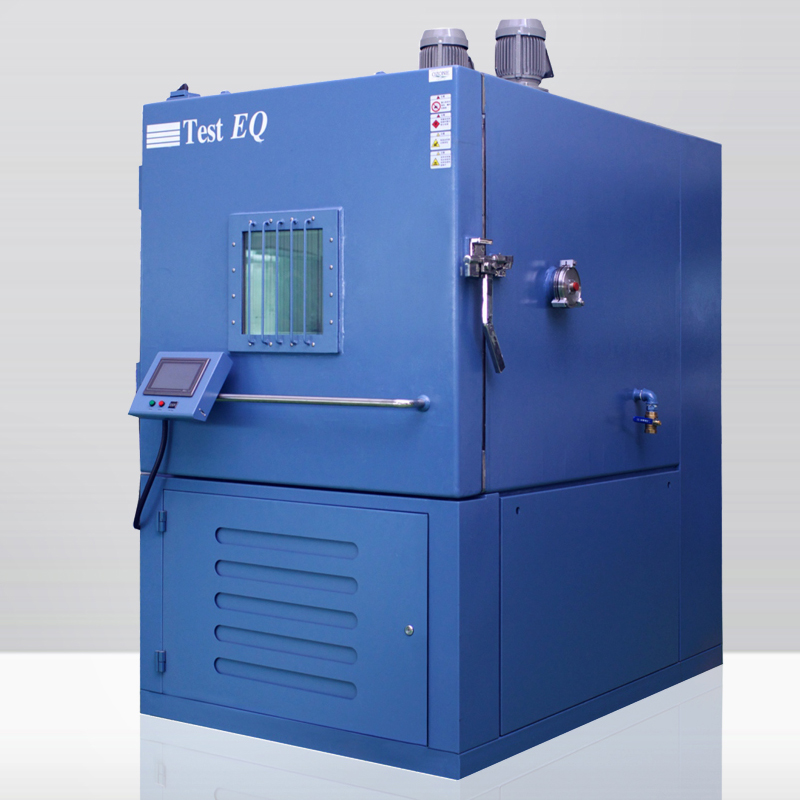4 Testing
4.1 General
All values of test parameters such as cold, dry heat, low air pressure and humidity exposure time and conditions such as state of operation and so on, should be selected from the IEC 60068-2 series or the relevant specification.
The duration of exposure shall be measured from the time when temperature stability of the specimen has been reached under conditions of low air pressure. Temperature stability shall be according to IEC 60068-1.
It should preferably be tested with low air velocity.
4.2 Preferred combinations
Preferred combinations of temperature, low air pressure and duration shall be selected from Table 1.

4.4 Test procedure
4.4.1 Preconditioning
The relevant specification may require preconditioning of specimen.
4.4.2 Test with temperature and low air pressure
Figure 1 and Figure 2 show examples of test sequence with temperature and low air pressure.
The specimen shall be introduced in the chamber as required (unpacked, switched on or off, The temperature within the chamber shall be adjusted to the required temperature as determined in 4.1. The rate of temperature change should not exceed 1 K/min. The specimen shall be allowed to reach temperature stability.
In the case of electrically-operated specimens, a function check shall be made in accordance with the relevant specification. Intermediate measurements shall be performed as required or specified in the relevant specification.
The pressure in the chamber shall then be reduced to the required value is determined in 4.1. The rate of change of pressure should not exceed 15 kPa/min.
The conditions of temperature and low air pressure shall be maintained for the required duration as determined in 4.1.
The low air pressure shall then be restored to normal pressure, at a rate not exceedingl 15 kPa/min. During the increase of pressure, the temperature does not need to be controlled.
The specimen remains within the chamber until the temperature reaches standard atmospheric conditions. The rate of temperature change should not exceed 1 K/min. The specimen shall then be subjected to the recovery procedure as required.


The TESTEQ test chamber is selected strictly in accordance with IEC 68-2-39 standard (low temperature/low pressure/wet heat sequence combination test) to achieve precise simulation of multi-dimensional environmental stress. The equipment supports a wide temperature range of -85℃ to 150℃ and a rapid temperature change of 5 to 15℃/min, meeting the strict screening requirements such as MIL-2164A and GJB-1032. The uniform temperature technology verified by aluminum sheet load ensures test consistency and helps to achieve a leapfrog upgrade in product reliability.



